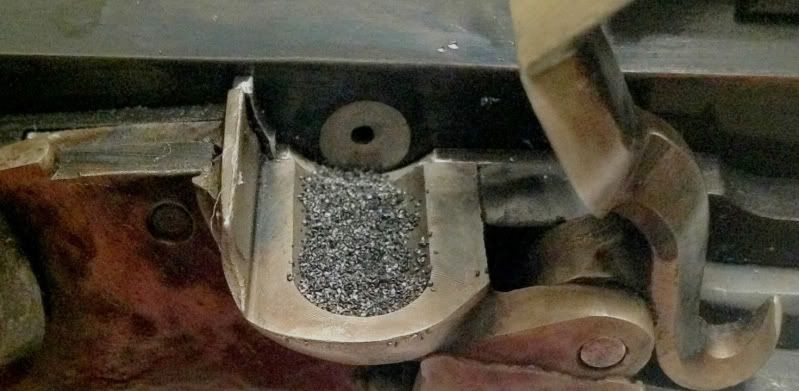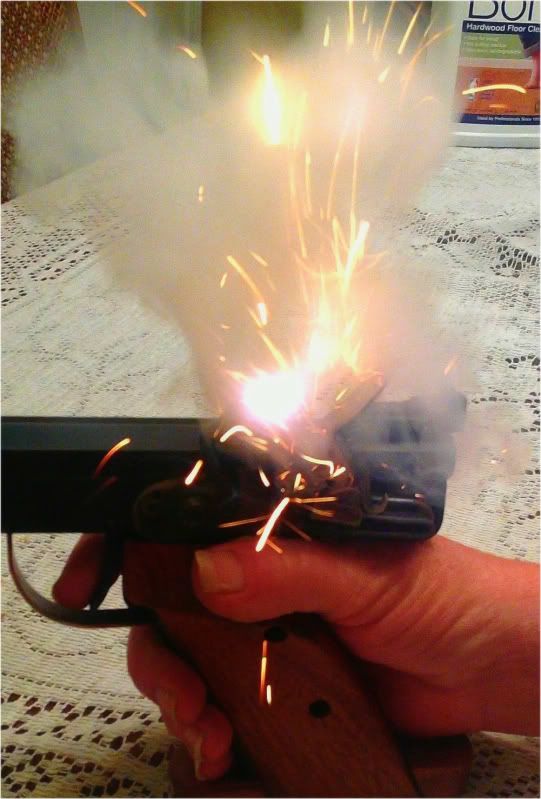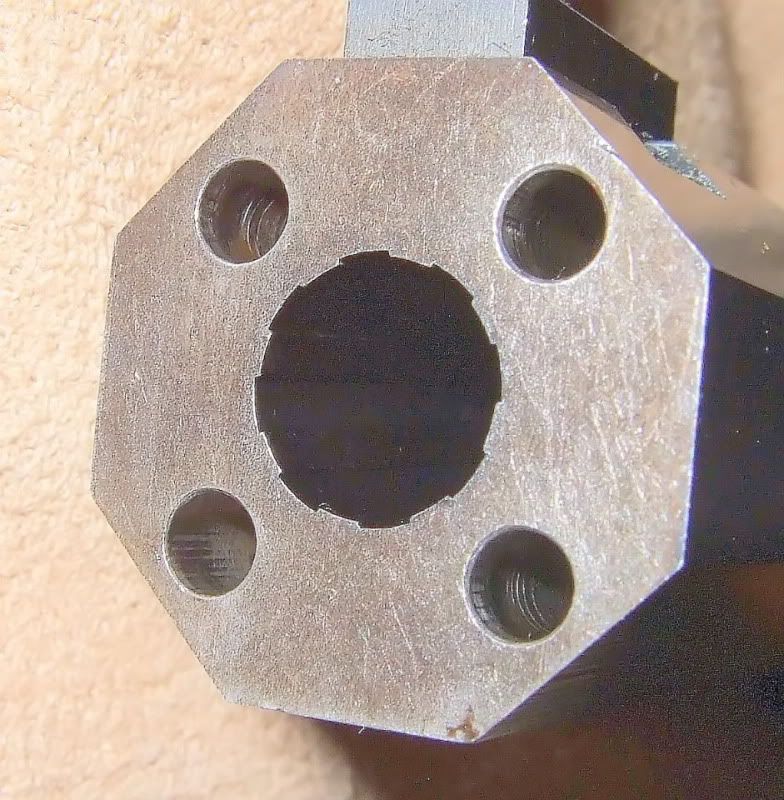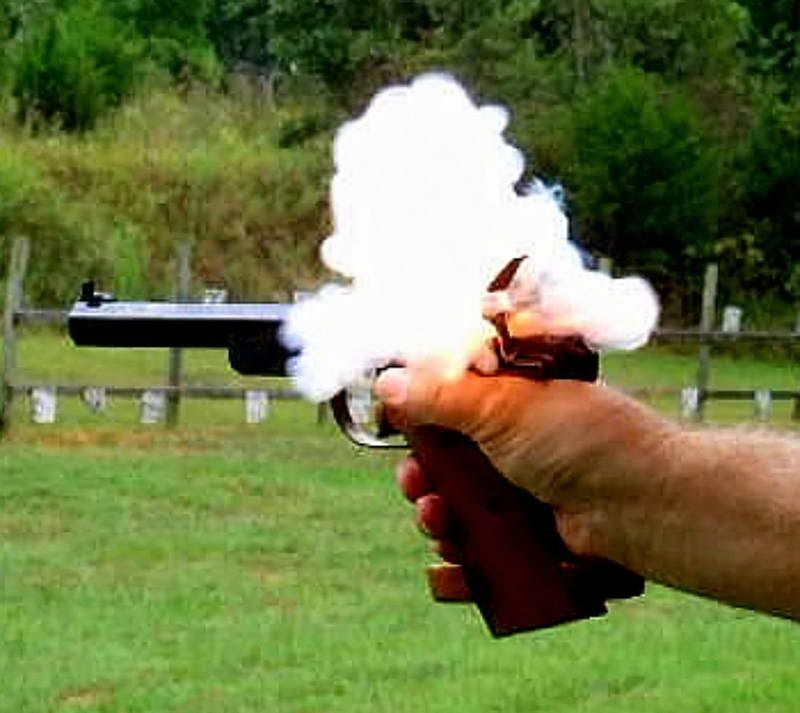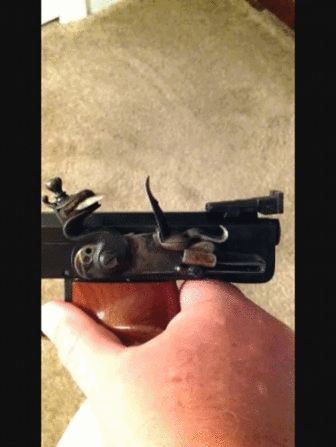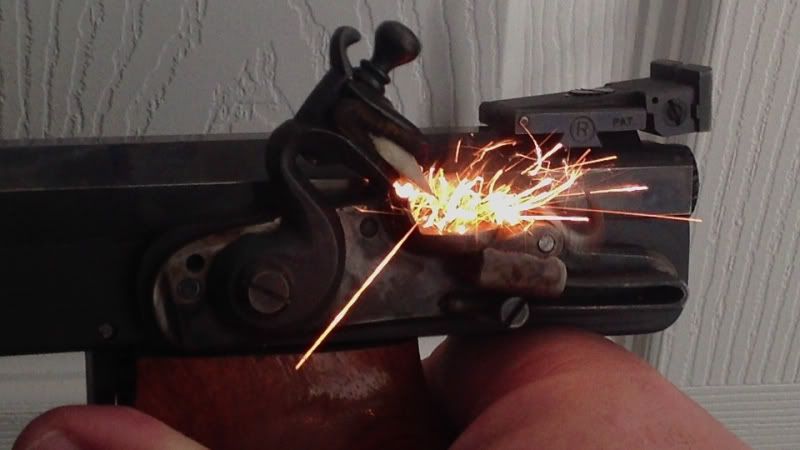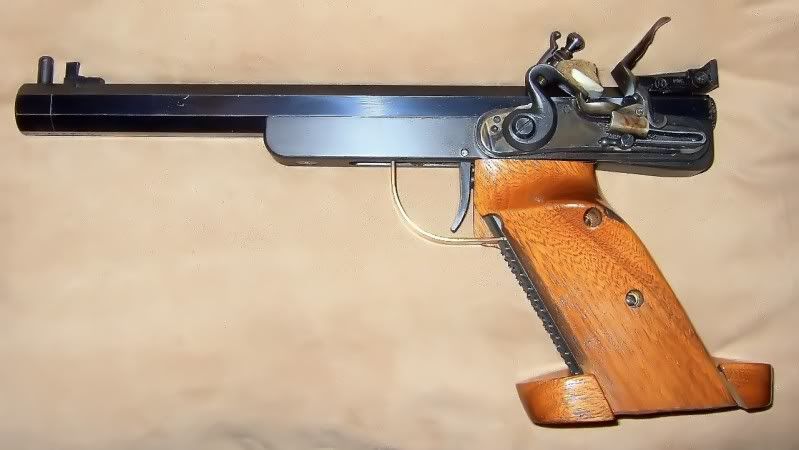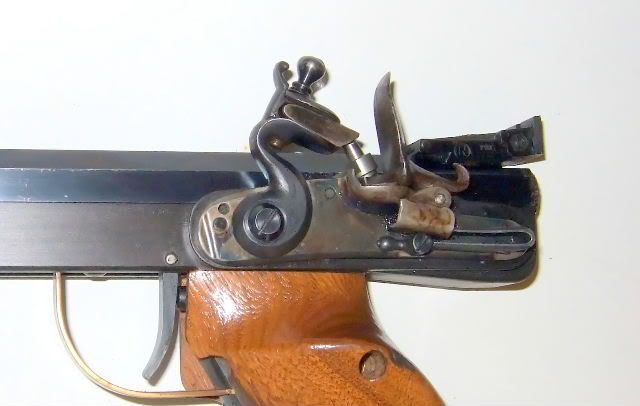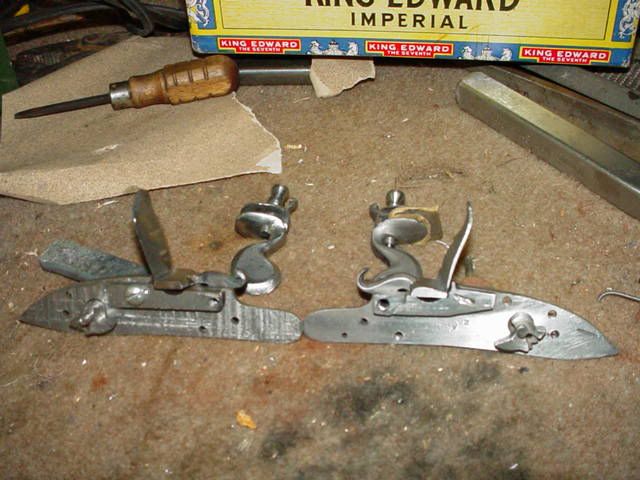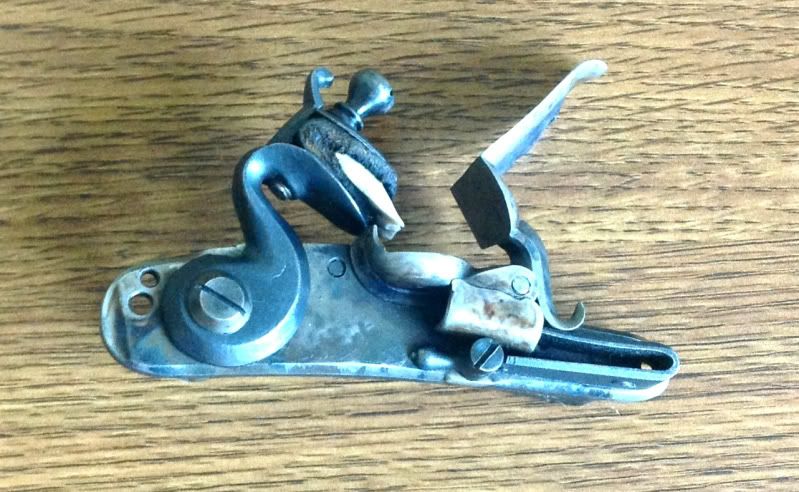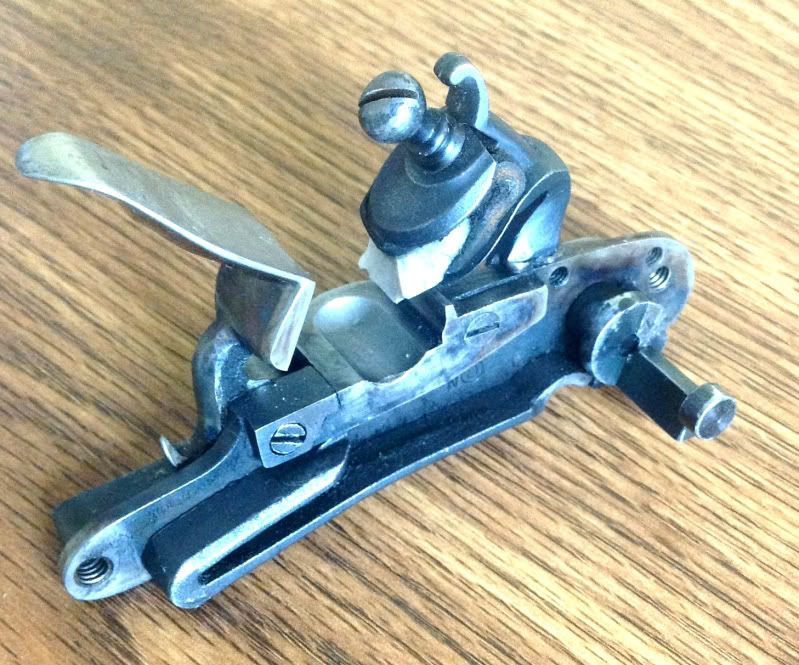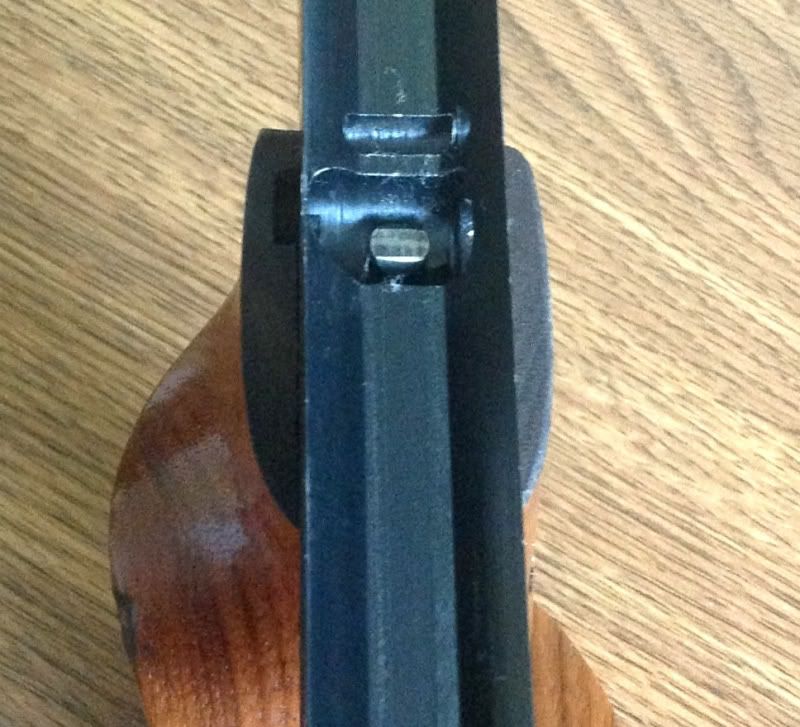My touchhole is .062 dia. I think the angle just makes it look big.
so you have a 1/16 flash hole
Actually it is a Davis Becky Lock. Yes the cock has been reworked.
There is nothing inside of the lock except the main spring. The lock works on
A cam. There is no half cock. No nothing. Just a quick downward movement of
the cock.
I am somewhat familure with the becky lock and how it works

in this photo on the right is the davis becky , on the left is a left hand becky in the process of being built for a .410 SXS aplication . Davis doesnt make a left hand becky , i do .
I would also point out that if your lock does not have a 1/2 cock , then the tumbler or cam as you call it , has eather been changed or modified .
the Davis Becky has both a half cock and a fly so that it will work with set triggers .
You are incorrect about the Frizzen. I can only say it has not been
Annealed. It is glass hard. Has lots of carbon in it
In order to spark , the frizzen must be made of carbon type steel or it will not spark . That sir is a given .
However even carbon steel thats tempered to be to hard or to soft , will not spark . It can not spark if the steel is harder then your flint , amber , Agget or what have you. What ever you chose to use , must be able to cut small microscopic pieces of the frizzen as it strikes and do so in a way as to shear them off by friction , making them glow from the heat of that shearing action .. If the frizzen is to soft they will simply cut off . To hard and they will not shear .and create the heat needed .
So while you say your frizzen is glass hard , its in fact been brought back from the hardening temper so that ist face is at a temperature less then 650-700 degrees . That ranges is defined by the material used in making the frizzen .
this is why some locks spark better with a given type of rock . IE some locks will spark better with amber then english flint or in the case of Agget wich sparks well in harder frizzens but in turn ofte eat up a softer frizzen .
Your sparks are not hot pieces of your rock , they are small microscopic pieces off of your frizzen .
while i would agree that the amount of spark from your lock is impressive , i would also say that its a sign of a quality lock thats properly tuned and a frizzen brought down to a level that produce a large quantity of sparks .
I have
Been shooting this for about 10 years now. Been fired thousands of times.
well good to hear. i have a rifle made by HH back in the early 70's so probably 10's of thousands of falls and also works wonderfuly
a good flintlock is a real pleasure to shoot .
And yes moving the lock to the right side will change the location of it. I used
To have one of his pistols with the lock on the right side. He showed me one
Day when I was visiting with him how the location will change depending on
Which side it's mounted on. I like you didn't think it should change, but it does.
ok , well , your going to have to show me how and why the lock would be in a different position when installed on the right side of the gun and put on backwards , which would mean a left hand lock must be put on the right side ..
The lock position is defined by the vent location . Unless for some reason you change that location when installed on the right gun , the lock has to be in the same place which then makes the trigger also be in the same place as that position is defined by the location of the sear ..
You say the lock is a Davis Becky. Since Davis doesn’t make a left hand Becky then placing your lock on the right side would move it forward as it must be installed the other way as it would be a right hand lock placed on the right hand side .
However again if a left handed lock was used for the right hand side , that lock would be placed in the VERY same location ..
so again as i said in my last post IF you used a left hand lock it would be place on your guns design, on the right hand siode , in the very same location
The difference between my vents and the others on the market is how I make
The inside. The ones you buy are conned on the inside with a taper going to
The hole. Mine are made straight sided with the bottom square
what you describe is a liner with a strait drilled flash hole . Its not new and in fact is common on none liner guns . Many of which while not having a liner , also have the inside of the barrel coned in the area of the flash hole so as to reduce the distance the flash must travel to the main charge . ..
There is much debate as to if one way is better then the other .
SomeVery well known makers even say that having a liner is dangerous .
With that in mind , since you say yours has strait sides , is it then safe to assume that you install it correctly in that you don’t have a treaded hole all the way through your barrel wall , thus providing a face for the liner to seat against since it cant be seated from the out side of the barrel.
IE you cant simply screw your liner all the way through to the point it falls into the bore .
That debate on if doing that is safe or correct , however a subject for another day . The simply fact is what you describe as your liner , has for a very long time been used to repair barrel that’s drilled flash hole has burn out to the point the flash hole is to large . IE a blank liner is made and the flash hole drilled .
what the advent of the liner did was to is provide a harder material then the barrel material , so as to reduce gas cutting IE flash hole enlargement..
So by your statement , what your saying is that you believe or side on the belief that the heat , pressure and flame from the main charge, travels as quick or quicker over the distance of a barrel walls thickness , then it will travel over 1/32 or 1/64 . that if it is not faster , then the ignition happens so fast that its not desernable by the shooter .
OR are you saying that a strait drilled flash hole is less subject to fouling then an improved designed flash hole ?
Thank you.
for your imput.
your welcome
